The Beechcraft 65 King Air plane crash that killed 11 people after leaving Oahu, apparently didn’t need to happen. We’ve learned more, thought about our own experiences, and found things you can do to protect yourself before stepping onboard Hawaii helicopter tours and small planes.
The state of Hawaii said that the Oahu Parachute Center was “not in good standing” prior to the country’s worst civil aviation incident in nearly a decade which took place last year. Nor was the company a registered tenant on the state leased land from which it operated. The company owner had a prior permit, but that was for repairs and rigging associated with parachuting and was under a different name.
NTSB said that Oahu Parachute Center, which was behind the deadly Hawaii plane crash, did not have the proper permits and the pilot was prone to death-defying risk-taking. It said the plane struck the ground following takeoff from Dillingham Airfield on north shore Oahu in June of 2019. The plane was conducting skydiving without the authority to do so. But how did the state allow that to happen in the first place?
The plane that crashed on Oahu was involved in a scary mid-air incident in California three years earlier.
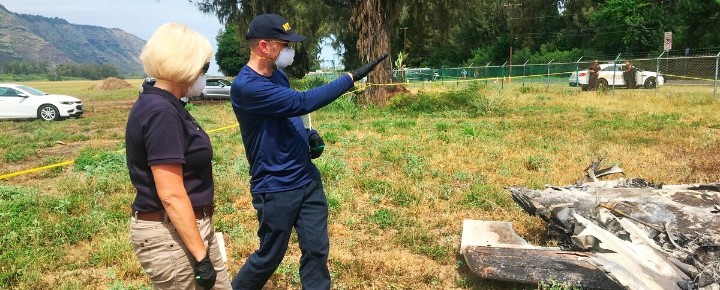

In that event, the plane went out of control, which forced all 14 skydivers aboard to jump for their lives. Following the Honolulu crash, the state evicted Oahu Parachute Center from its property and revoked all prior permits.
The company said on its website, “There are no words to describe the overwhelming heartbreak that we are all enduring. We are in full cooperation with HPD, the FAA, and the NTSB in hopes that we discover what led to this terrible event.”
Witnesses say the pilot involved was known for unsafe and inappropriate risk-taking.
This week, NTSB said that while it could not specify the exact cause of the crash, but mentioned there were two last-minute skydivers who onboarded as well as repairs that were done following the 2016 crash. But there was more.
It was reported that the pilot “would bank hard and pitch up aggressively on departures, and… do that as a ‘thrill ride’ for the passengers… The pilot would also do negative-G dives for the ‘weightless’ effect for fun, but he heard some jumpers would complain.” A passenger from the day prior to the deadly crash said of the pilot, “He definitely banked it a little hard on a high rate turn at a seemingly low altitude.” That according to skydiver Stephen Hatzistefanidis.
A witness, Sayar Kuchenski, reported that on other flights “the pilot would sometimes take off at an extremely steep angle and aggressive climb right after leaving the runway. This was presumably done for fun to intentionally create a high-gravity environment.”
The aircraft mechanic for the plane was said to not be communicative with federal investigators and the FAA records showed a history of maintenance record falsification. He was nonetheless reissued a certificate in 2015.
How do you protect yourself as a consumer on Hawaii helicopters and planes?
Choose your helicopter and small plane flights carefully!
1. Understand the risks. While incidents aren’t frequent, they can occur. Pick a company that has a good safety record. More on that below.
2. With helicopters, choose a certified FAA Part 135 Air Carrier, as those companies must meet higher standards. Look for that designation on the carrier’s website or just ask them about it.
3. Research plane and helicopter operators. Look at the NTSB website to find any tour provider within its accident database.
4. Ask about your pilot. Be sure to choose one with a number of years of useful experience.
60+ Hawaii Helicopter Tours Accidents In Past Forty Years
As we all know, the weather here can be extreme and fast-changing. We’ve heard that up to 1/3 of all helicopter accidents in Hawaii may be weather-related. Weather, mixed with the financial necessity to fly, especially now, can create dangerous situations.
Beat of Hawaii © photo at helicopter favorite Kokee State Park. Accident site embed image courtesy of NTSB.
Get Breaking Hawaii Travel News
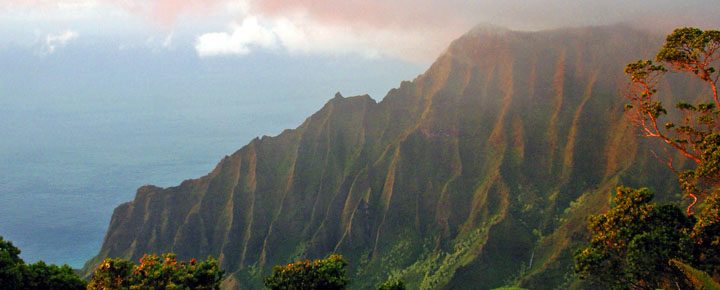
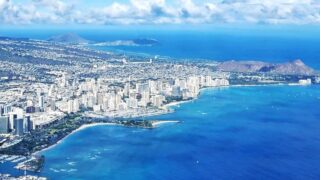
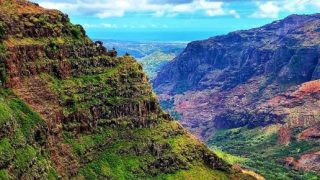
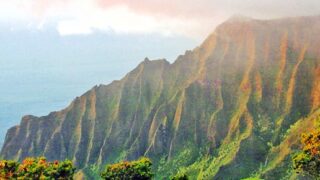
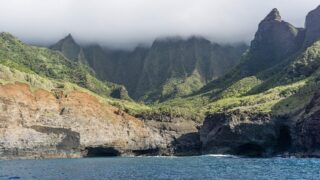
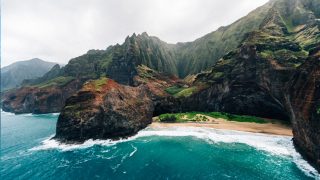

A prospective passenger on one of these flights cannot be expected to do the investigative search you suggest. The Hawaiian authorities are totally to blame for allowing this operator to have been conducting this illegal flight.
Thank you for the very well written article, gentlemen. Lots of lessons learned and helpful tips. Vacation mishaps happen more than fold often realize. People seem to be less in tune with risk and “doing homework” on providers when we are excitedly seeking our once in a lifetime vacation experiences. Thank you for helping to watch out for us, and for reporting In a fair and unbiased manner.
Aloha!
Rick
Hi Rick.
Thanks. Yes, this is a different time, and coming without dotting I’s and crossing T’s has created problems for visitors.
Aloha.
Aloha My Aviation BOH Buddies
On my 18th birthday in 1979 I earned my fixed wing private pilot license, pretty scary when you think about it.
I went on to attain a multi engine certificate, IFR certificate and a commercial license.
99.9 percent of aircraft accidents are pilot error. The tragic death of Kobe Bryant and the others on board of that helicopter were due to pilot error. That one really hurt it made me cry. That pilot…..put it this way the LA sheriffs department who were flying out of the same airport refused to fly on that day.
When training for your pilots license it is drilled into you that you’re responsible for the safety of your passengers. There have been more then one occasion where I last minute canceled a paid customers charter due to weather or an aircraft not airworthy.
Man they were pissed, but I did the right thing each and ever time.
Most of the recent air accidents have been caused by either over loading the aircraft or poor weather. I’m checked out on a Beachcraft King Air there’s no way in the world 14 skydivers and a pilot should have been on board a King Air.
I will not fly on a helicopter. An old helicopter pilot saying goes “It’s not if you’ll crash a helicopter it’s when you’ll crash your helicopter”.
When money is on the line people make poor decisions the only way to stay safe is to not fly on any of these sight seeing charter services.
Aloha Guy’s Have a great weekend.
Rich
Hi Rich.
Thanks so much for all of your insights. Much appreciated.
Aloha. R/J
Maintenance has always been a factor with air tour airplanes. I started my aviation career in Hawaii flying air tours in the mid 70’s. We were pressed into flying even when the weather was marginal.
John W., DC-10 captain retired.
First a question: Are there similarities to the Oahu crash to the incident with the jump school there?
Observation about copter tours: I’ve done many on the islands. The suggestion about copter pilot useful experience does match up well with several of accidents:
1. The recent Safari incident involved their senior pilot.
2. Mauna Loa on Maui crashed with their flight instructor (it was a lesson)
3. The Novitor incident involved their owner as pilot. (The Mauna Loa was also a Robinson)
4. The Jack Harter incident with their Hughes aircraft involved a pilot who I believe was a former accident investigator and copter pilot with the Navy.
5. The Blue Hawaiian incident on Maui involved a pilot with over 10,000 hours.
I’ve flown twice with pilot who had minimal hours. I flew a charter on Oahu with a pilot who I thought was an Army pilot, but turned out he was in the Army but not a pilot and in fact had only recently qualified to fly charters. I flew on Kauai with someone who had not been qualified for more than a few months, but I keenly aware that he was following procedures and was all business for the entire flight. So, I’m not so sure hours or experience or quality of hours is a great measure.
I think a pilot who has lived and worked on the islands is a plus. A local pilot with Blue Hawaiian confided that it takes air time in Hawaii to understand the quirks of the weather and terrain. The counter point to this is that Island Helicopters on Kauai had two incidents with local resident pilots.
Next trip probably in a year, I plan to air tour again. I’d love to skydive but the company on Kauai is the same group that had the incident. I will copter again and will choose company that has a good track record over say 10 years: Blue Hawaii, Jack Harter, Island.
Thank you and best wishes to you on Kauai with the reopening.
Hi Thomas.
Thanks for your insights and for your numerous comments over the past 5 years. You, Richard, and others – wow, we are lucky to have so knowledge around us.
Aloha.
How does that state not know who is advertising sky diving without a permit? All they need to do is a simple Google search for providers and then validate they are legit. Tourists expect these companies to be legit, but I guess we now know that may not always be the case…
I will be interested in knowing how that company and plane operated so long there if their previous permit was expired. Were they paying someone involved with the government to operate without the proper permits? Was the government agency who issues the permits awre of their non permitted operation? Something smells here!
Excellent, well written, great information. Thank you!